|
On May 16, 1992, Munich's Riem Airport closed after 53 years, to be replaced by the city's brand-new "Franz Joseph Strauss International Airport." In today's blog post, we revive Riem's memory with some amazing images from the period 1972-1992! A 1980s airside view of Riem Airport's terminal building, featuring a couple of Lufthansa classic jets. Many older Munich-based "Lufthanseaten" remember the characteristic airport with great affection. Construction of Riem began in 1937. The airport was put in operation on October 25, 1939, when the first civilian flight , a Lufthansa Junkers Ju 52/3m arrived from Berlin. A 1988 aerial of Munich Riem, looking northeast. From this view it is apparent that the airport did not have any room to expand and the search for a new airport kicked off as early as 1963. In 1969, runway 07R/25L was lengthened to its final length of 2,804 meters (9,199 feet). Pan Am Boeing 747-121 "Clipper Midnight Sun," photographed visting Riem sometime during the late 1970s/early 1980s. A 1980s landside view of the passenger terminal. The building was designed by German architect Ernst Sagebiel, who also designed Berlin Tempelhof, Dresden, and Stuttgart, which were being built at the same time. A 1970s view of the check-in area. How cool that back then you could open a window for some fresh air! A mid-1970s aerial of Riem's terminal complex. In 1971, a DM 36 million expansion was completed, doubling the airport's capacity to 7 million annual passengers and readying the airport for the influx of visitors during the Summer Olympics of 1972. The expansion included six gates equipped with boarding bridges, which were still pretty much a rarity at airports in Europe at the time. British Airways Concorde with the registration G-BOAD during a visit to Riem on August 10, 1983. Want more stunning airport photos & stories?
Sign up to our newsletter below to know when new content goes online! An undated view of one of the gate holding lounges. An aerial taken on on 21 March 1973. This was the day of the European Champions' Cup quarter finals between Ajax Amsterdam and FC Bayern, which brought a large number of football charters to the airport. Visitors include a KLM DC-8 and DC-10. A busy apron scene in the late 1980s. Visitors include a Boeing VC-137C United States Air Force aircraft, one of two customized Boeing 707s, which were specifically configured and maintained for use by the president of the United States. An airside view of the terminal building taken a few days after the closure of Riem. In 1991, its final full year of operation, 10.8 million passengers were handled. After closure, Riem was redeveloped into an office and convention area. This aerial view looks west toward Munich. Thankfully, Riem's air traffic control tower has been preserved and is now part of the corporate headquarters of Brainlab AG, a Munich-based technology company. The company rents out the tower as an event space. Better still, the tower cabin contains a bar. Now that's the way to do preservation, folks! For more information and images follow this link. Bonus: It's movie time! A cool 1992 video about Riem's history and closure. Also briefly covers the new airport. It's in German, but there's lots of cool footage! Credit: Flughafen München GmbH. Another, longer 1992 documentary on Riem's history, closure, and the new airport. In German but well worth the footage! Credit: Flughafen München GmbH. Did you travel through Riem Airport? What was the experience like? Share your impressions in the comments below! More airport articles: Click here Want more stunning airport photos & stories?
Sign up to our newsletter below to know when new content goes online!
6 Comments
Charlotte's Jet-Age terminal was opened 40 years ago on May 2, 1982. The new terminal boasted 25 gates equipped with boarding bridges and was more than twice as large as the previous terminal, which opened in 1954.
In today's blog post we will take a look at some amazing images, which were taken around the time of opening!
The ramp in between concourses B and C, photographed shortly after the opening of the new USD 64 million terminal in May 1982. In 1979, Piedmont Airlines chose Charlotte as the hub for its expanding network. The airline grew from three gates in the old terminal to 12 in the new one.
An aerial of the new terminal taken shortly after opening in May 1982. The new 325,000-square-foot (30,200-m2) passenger terminal was designed by Odell Associates.
Concourse B (left in image) featured 10 gates, which were exclusively used by Eastern Airlines. Concourse C boasted 15 gates, 12 of which were used by Piedmont, two by Delta, and one by United. The walk from the end of the concourse to the other was 1,900 feet or about a walk of six and a half minutes. Concourse C was lengthened in 1985 and B in 1987/88. Concourses A and D were opened in 1986 and 1990 respectively.
A view of the ticketing lobby shortly after opening. The carpet in the main terminal was bright green and was tweed brown in the concourses. Those colors were chosen to represent the natural beauty of North Carolina and the great outdoors.
Concessions included a Dobbs House restaurant, a bank, a lingerie shop, an ice cream shop, a barber shop, and a video game room. When the new terminal opened, the airport was renamed from Douglas Municipal Airport to Charlotte Douglas International Airport. The airport is named after Benjamin Elbert "Ben" Douglas Sr., who served as mayor of Charlotte from 1935 to 1941. It is the gateway to the city but it doesn't have to be a Taj Mahal
A busy ramp scene showing Piedmont 727s, 737s, a Fokker F28 Fellowship, and an Eastern DC-9. Eastern also operated the first regularly scheduled airline flight from the new terminal: Flight 615 to Atlanta, which left at 7:15, seven minutes after its scheduled departure time.
Just as flight 615 backed out of the gate, Eastern Flight 212 from Columbia was landing, 10 minutes ahead of schedule, to become the first regularly scheduled flight into the new building.
Want more stunning airport photos & stories?
Sign up to our newsletter below to know when new content goes online!
The Piedmont check-in area. When the terminal opened, Piedmont added eight flights to the existing 78. Delta added three flights, for a total of nine. Eastern dropped two flights for a total of 55, while United continued with three departures a day.
Another 1982 overview of the new terminal taken just before sunset. In 1981, Charlotte ranked the 31st busiest airport in the United States. In 2019, it ranked 6th busiest in the nation.
Between 1982 and 1989, Piedmont grew from the initial 12 gates and 86 daily flights to 39 gates and 472 daily flights. In 1989, Piedmont was absorbed into USAir, which had acquired the airline two years prior.
We close with this 1982 nighttime view of Concourse C. This photo was taken by Henry Gasque.
Did you travel through Charlotte's terminal in the early years? Share your CLT memories in the comments below!
More airport articles: Click here
Want more stunning airport photos & stories?
Sign up to our newsletter below to know when new content goes online! On July 1st, 1981, 40 years ago, Singapore Changi Airport opened for traffic. The airport went on to become a consistent favorite with travelers, winning the "World's Best Airport" title for eight years in a row (2013-2020). In a larger context, Changi Airport has played a pivotal role in cementing Singapore's role as a regional hub of trade and commerce. In this short article, we will show you a few rare images from the airport's planning phase and very early years of operation. You might learn a thing or two about your favorite airport that you didn't know before! THE NEED FOR A NEW AIRPORT As the Singaporean economy rapidly grew in the 1960s, traffic at Paya Lebar Airport, the nation-state's only civil airport, boomed as well. Even though Paya Lebar was opened as recently as 1955, by the early 1970s, it became clear that the airport could not accommodate Singapore's long-term air traffic needs; due to urban encroachment, the airport, which only had one runway, could not expand and noise issues were becoming an increasing concern. As a result, in 1975, the Singaporean government took the decision to build a brand-new airport that could serve the country's needs well into the 21st century. The airport would be built at the far eastern tip of the island, which was already the site of Changi Airbase. After completion of the new airport, Paya Lebar would be converted to a military air base. A very rare 1958 color image of Changi Airbase--then called RAF Changi--whose origins date back to World War II. The new airport would be built east of the base (to the left of the image) and bear its name. A total of 200 hectares of swamp land would need to be cleared, and 870 hectares of land needed to be reclaimed from the sea. The great advantage of the location was that both landings and takeoffs would be over water. The main runway visible in the image would become the future airport's western runway. An extremely rare document: the original 1976 Master Plan for the future Changi Airport. The master plan envisaged two parallel runways, which would make Changi only one of a handful of civil airports in the Asia Pacific region to have two runways. The master plan envisaged three passenger terminals, each boasting a capacity of 10 million annual passengers. The plan even had a strategic reservation for a future Terminal 4. With the wisdom of hindsight, we now know that was no luxury! Did you know?
Both the 1976 Master Plan and the design for Terminal 1 were prepared by NACO Netherlands Airport Consultants, the same company that designed Amsterdam's Schiphol Airport.
At the time, Schiphol was a state-of-the-art international transfer hub, receiving the highest praise from passengers and airlines, something the Singaporean government was eager to emulate. Another unique image: a 1976 model of Changi's future passenger terminal area in its final buildout. The terminal layout shown here was not far off from what ended up being built. A major difference with the model is that in the 1990s, piers were added to Terminal 2, and the piers of Terminal 1 were extended. This was due to transfer traffic being much higher than anticipated, leading to an increased need for aircraft gates. Another difference is that in the model the terminals are connected by means of pedestrian bridges. Instead of this, an Automated People Mover (APM) was built. Construction is in full swing in this aerial view, taken in early 1980. Sea-fill and earth fill started in April 1976 and were completed by May 1977. The foundation stone for Terminal 1 was laid in August 1979. At one point, more than 2,500 workers were employed at the site. The total construction cost of Phase 1 was SGD 1.3 billion (USD 964 million)--a hefty sum, let alone 40 years ago! An aerial image of Changi Airport's Terminal 1, ca. 1984. Terminal 1 had an annual capacity of 10 million passengers and featured 22 gates equipped with passenger boarding bridges, a luxury only found at a few airports in Asia at the time. In 1982, its first full year of operation, Changi Airport handled 8.6 million passengers and 217,000 tonnes of cargo. By 2019, this had grown to a whopping 68.3 million passengers and 2.01 million tonnes of cargo. An early 1980s interior view of the check-in hall in Terminal 1. The terminal featured six check-in islands and 120 check-in counters. Terminal 1 had 32 shops and seven food and beverage outlets--a good number for a large, modern airport terminal at the time, but not by today's standards where food and beverage has become the money maker for airports. Today there are 140 F&B outlets serving up various cuisines across all four terminals. Like this article? Support us by donating just $2.95 and receive a fascinating Changi download! For the price of a cup of coffee you can help our mission to protect & preserve the heritage of the world's great airports!
As a token of our thanks you will receive a fascinating digitized 28-page brochure from 1980 introducing the 'future' Changi Airport!
A 1981 exterior view of the newly-built Terminal 1, which at the time cost SGD 250 million (USD 185 million) to build. In 1981, Changi handled 6,888,000 passengers. Did you know?
In its first two weeks of operation, 250,000 visitors – or 10% of the entire population of Singapore back then – visited the airport. An aerial of Changi Airport, taken ca. 1986, showcasing its orderly, master planned layout. In the middle of the image, earthworks are underway for the construction of Terminal 2. Are you able to spot the remnants of the old RAF Changi? Another view of Terminal 1 during rush hour. To the right we can see the Mylar Cord Waterfall that “rained down” in Terminal 1 for 31 years, until it was replaced in 2012 with the Kinetic Rain installation. Passengers awaiting their flight at one of the gates. Changi Airport's signage was also inspired by that of Amsterdam's Schiphol Airport--but whereas Schiphol has the yellow bright signs with black letters, this was inverted for Changi. A vintage view of the baggage reclaim area of Terminal 1. A 1986 view, looking northwest towards Terminal 1. Changi was only the third airport in the Asia Pacific region to feature an aircraft taxiway bridge. Which airports had them first, you ask? You can find out the answer here! BONUS: A fascinating video from the National Archives of Singapore, covering the airport's design, construction and early years of operation. What are your thoughts about Singapore's Changi Airport? Leave your comments below! More airport articles: Click here Want more stunning airport photos & stories?
Sign up to our newsletter below to know when new content goes online! I want to extend a special thanks to Hein Baijer for making available the NACO materials.
THANK YOU FOR YOUR SUPPORT! One year ago today, we launched www.AirportHistory.org! The response to the site has been overwhelming. I’m proud to say that to date 60,000 people have visited the site since it launch! In addition, we have received numerous e-mails of support and enthusiasm from around the world. A LONG TAKEOFF RUN This website has been a long time coming. I have been fascinated with airports since I was four years old after taking a flight from Amsterdam to Atlanta in the summer of 1981. I remember the impressive terminal buildings, the beautifully dressed people and airport advertisements...all the colors of the runway and taxiway lights. I was mesmerized by it all. After returning home, I started drawing airport layouts like crazy. Every few weeks I rented the movie “Airport” and watched it ten times in a row! In 1985, I bought my first book on airports: Major Airports of the World, written by Roy Allen. It's still my favorite book. I own 20 copies from different editions and languages! A few years later I started collecting airport books, reports, brochures and photos, sending letters--and the first faxes--to airports around the world. This was the start of what would become one of the world's most prolific airport photo collections. THE BIRTH OF AIRPORTHISTORY.ORG Over the years, the idea surfaced to put my archive out there for people to enjoy. For a long time I felt that the interesting and colorful history of the world's airports had been hopelessly neglected, first and foremost by airports themselves, which often only had a small web page with bullet some points and a few grainy photos. I decided to correct things myself. On July 1st, 2013, I registered the domain name www.airporthistory.org, after which I started a new round of collecting, this time being able to leverage my professional network. THE MISSION With AirportHistory.org, we aim to create a central resource about the development history of the world's great airports. The emphasis is on showing captivating and rare images that show how airports have evolved through the decades. The photo collections are accompanied by an accessible historical narrative focusing on providing interesting facts and stories about a given airport. The focus is on infrastructure and architecture and how each airport tried to keep pace with ever-growing traffic as well as paradigm changes like the advent of the wide-body aircraft or the hub-and-spoke system. Naturally, we have a fondness for the period 1960-1975, when exciting experiments in airport design took place. Airport planners and architects in that era couldn't fathom the future growth of air travel to what it is today, the rate of growth and changes to come. The airports they built, although innovative for the time (e.g. DFW, JFK, CDG, FRA, etc.), quickly proved to be either too small or unsuitable for today's large-scale modern operations. Once considered visionary, some of these legendary airports are now among the most despised among the traveling public. WHAT’S AHEAD? We have many exciting developments coming. As of now you can look forward to regular content coming out. We will continue our very popular series on airports such as New York Kennedy and Paris de Gaulle. At the same time, we'll be starting series on airports such Boston, Chicago O'Hare, Miami, Rio de Janeiro, Amsterdam, Frankfurt, the London airports, Dubai, Singapore Paya Lebar & Changi, Tokyo Narita, Melbourne and Sydney. We will release never-seen-before photos of great airports that are not with us anymore, such as Denver Stapleton, Oslo Fornebu, and yes, of course, Hong Kong Kai Tak! And of course, we plan more stories about never-built airports and never-built expansion projects at existing airports. Lastly, we’re planning many new photo specials as well as special themes, such as the evolution of airport shopping and eating as well as the history of airport lounges. We are also preparing to open a web shop, where we will offer you the opportunity to own digital copies of fantastic vintage airport brochures, reports and photos. For the longer term, we’re planning a series of high quality coffee table books on the history of the world’s great airports featuring many additional photos not seen on this website. Do you want to stay posted on all of these developments? Make sure you sign up to our newsletter below, or follow us on social media! |
With a title inspired by the setting of the iconic 70s film "Airport", this blog is the ultimate destination for airport history fans.
Categories
All
About me
Marnix (Max) Groot Founder of AirportHistory.org. Max is an airport development expert and historian. |

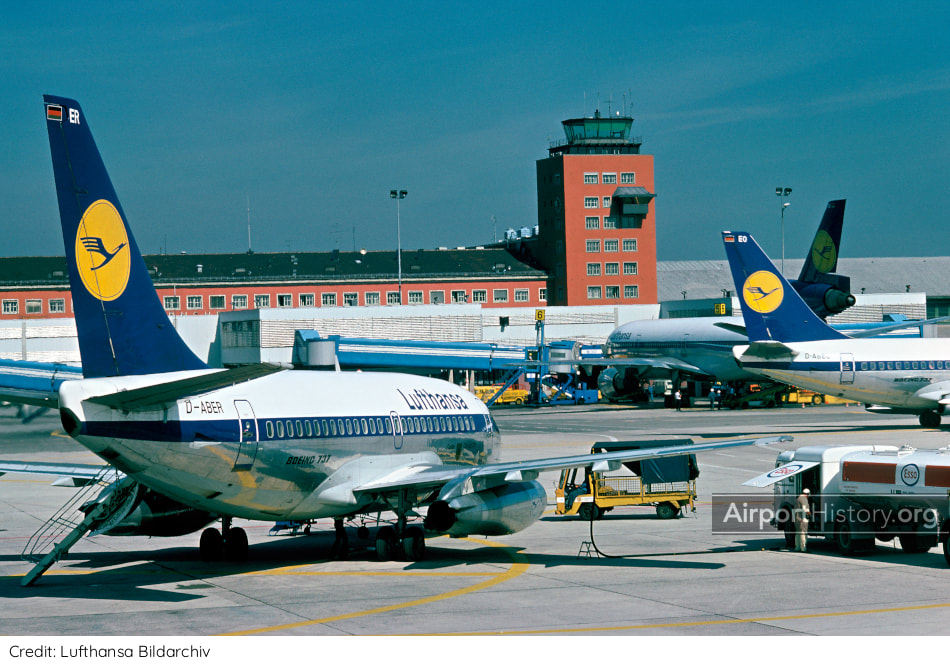









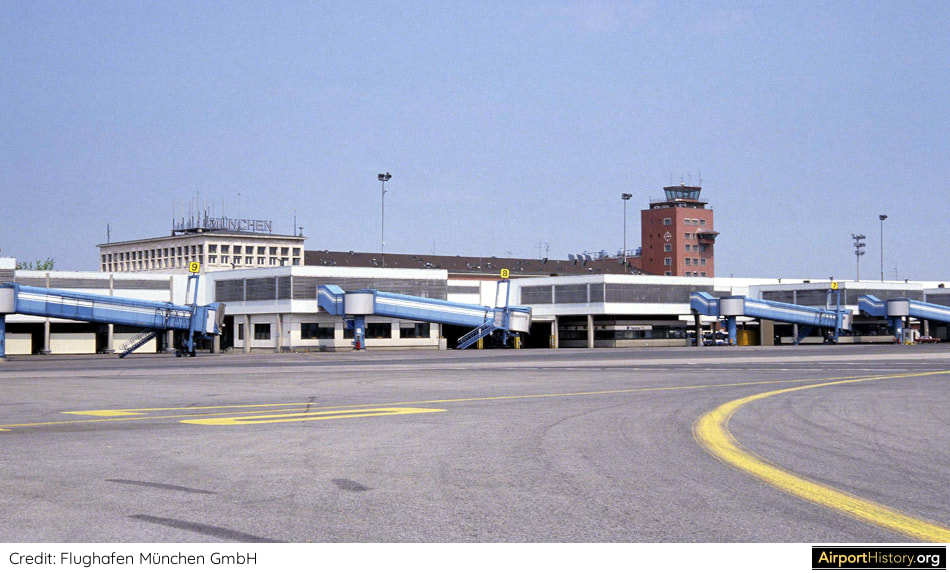



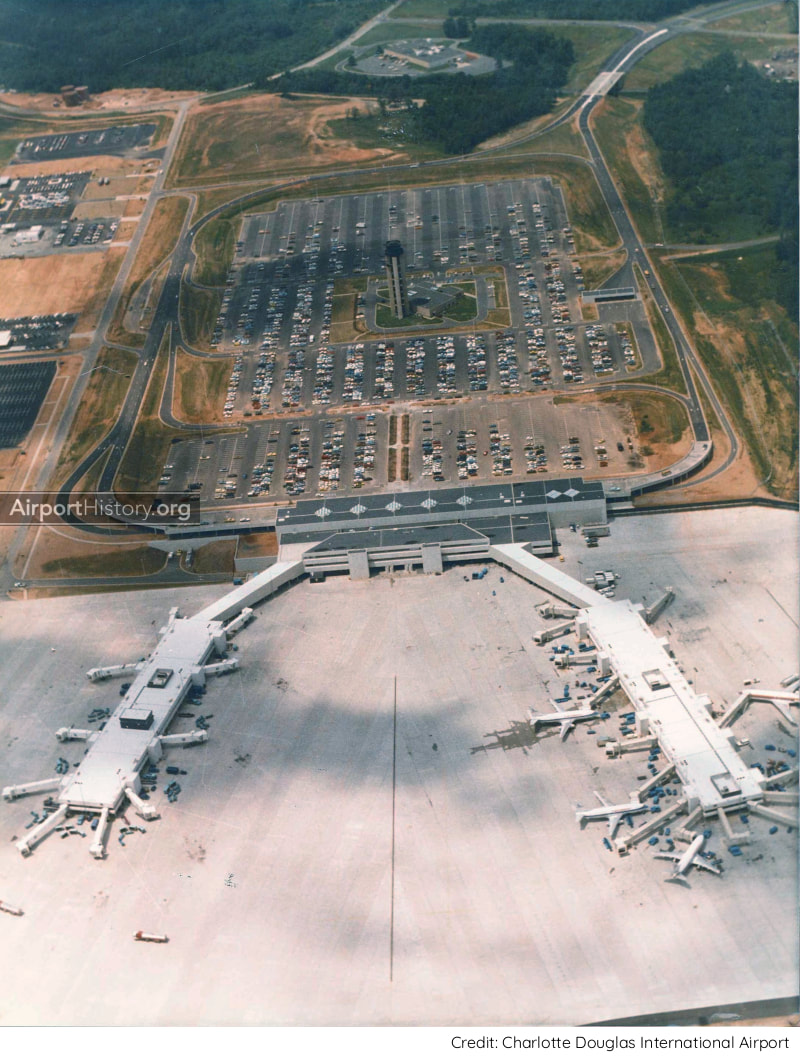


















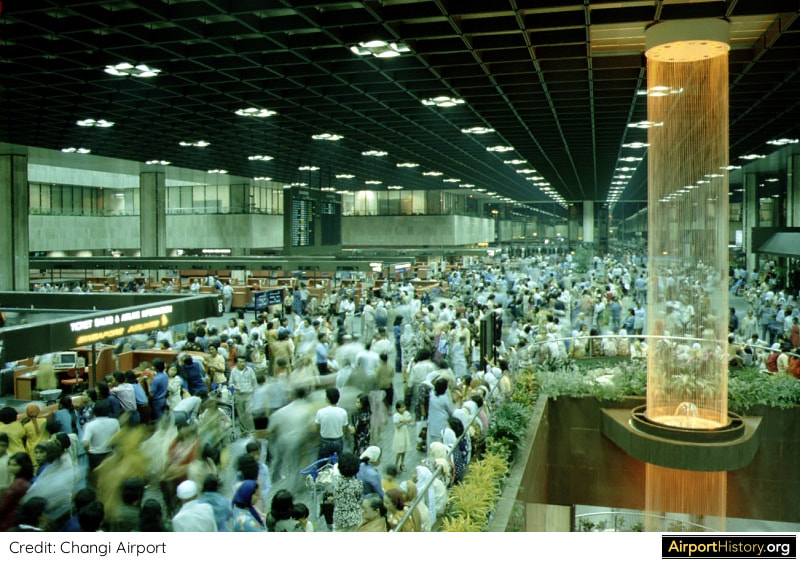



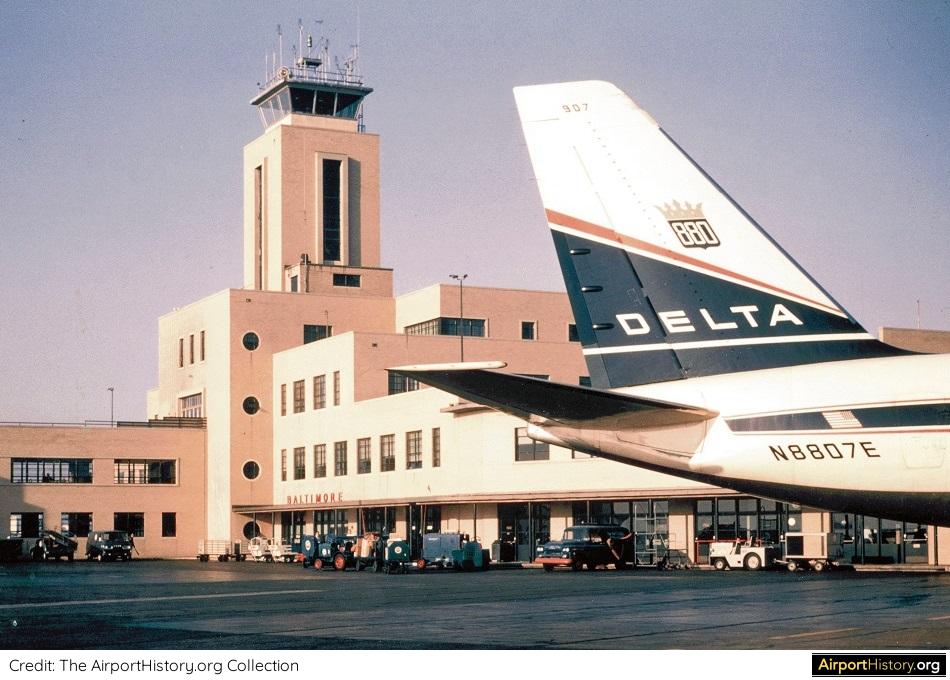




 RSS Feed
RSS Feed